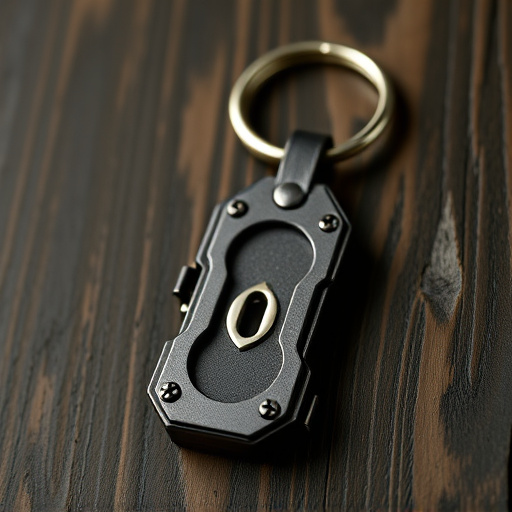The strongest self-defense keychain material is high-grade stainless steel or titanium, offering exceptional durability, corrosion resistance, and a secure grip for efficient combat. Ergonomic designs with textured surfaces enhance comfort and maneuverability. Balancing weight, functionality, and material quality ensures optimal performance in emergency situations. Evaluate materials based on wear resistance, grip security, and balanced construction for quick deployment.
“Enhance your personal safety with a well-designed metal defense keychain. This comprehensive guide explores crucial aspects of creating an effective self-defense tool. From selecting the strongest materials—crucial for durability—to design tips ensuring optimal grip and weight balance, we cover it all. Learn how to navigate the process, from choosing the premier self-defense keychain material to rigorous testing. Maximize functionality while prioritizing safety with our expert design considerations.”
- Choosing the Strongest Materials for Keychain Defense
- Design Considerations for Maximum Grip and Durability
- Balancing Weight and Functionality in Self-Defense Keychains
- Testing and Evaluating Your Metal Self-Defense Keychain Grip
Choosing the Strongest Materials for Keychain Defense
When designing a self-defense keychain, selecting the strongest materials is paramount for ensuring its effectiveness and reliability. Look for high-quality metals like stainless steel or titanium, which offer exceptional durability and resistance to deformation. These materials are less likely to bend or break under pressure, making them ideal for self-defense tools. Additionally, their strength provides peace of mind, knowing that your keychain can withstand the rigors of unexpected situations.
The choice of material also significantly impacts the overall performance of the keychain grip. Opting for robust alloys allows for a secure and firm grasp, enabling precise control during use. Moreover, durable materials are less prone to corrosion, ensuring your self-defense keychain remains in top condition over time, especially when exposed to various environments.
Design Considerations for Maximum Grip and Durability
When designing a metal self-defense keychain, prioritizing grip and durability is paramount. The strongest self-defense keychain material should not only be robust enough to withstand rigorous use but also offer a secure, comfortable grip for efficient combat. Consider materials like high-grade stainless steel or titanium, known for their exceptional strength-to-weight ratios, corrosion resistance, and durability. These metals are less likely to deform or break under stress, ensuring your keychain remains functional in critical situations.
Additionally, ergonomic designs can significantly enhance grip. Incorporating textured surfaces, contoured shapes, or non-slip coatings improves friction, allowing for better control during intense combat scenarios. Remember that a well-designed keychain should not only protect you but also be comfortable to hold and maneuver, making it a reliable companion for self-defense purposes.
Balancing Weight and Functionality in Self-Defense Keychains
When designing a self-defense keychain, striking the right balance between weight and functionality is paramount. While a heavier keychain might offer increased impact during an emergency, it could also hinder ease of use and accessibility. Conversely, overly lightweight options may not deliver the necessary force for effective defense. Opting for high-quality materials like durable steel or powerful alloys ensures both strength and maneuverability.
The strongest self-defense keychain material should combine resilience against impacts and wear with a compact design. Consider using advanced metallurgy techniques to achieve optimal weight distribution, allowing for swift deployment without sacrificing defensive capability. This careful consideration of weight and functionality is crucial in creating a versatile tool that can serve its purpose when needed most.
Testing and Evaluating Your Metal Self-Defense Keychain Grip
When testing and evaluating your metal self-defense keychain grip, it’s crucial to focus on both functionality and durability. The strongest self-defense keychain material should be able to withstand rigorous use, including frequent handling and potential impact. Look for signs of wear and tear during your tests – any visible damage or deformation could indicate a weakness in the design or material choice.
Additionally, assess how comfortably and securely the grip fits in your hand. A well-designed metal keychain should provide a firm, non-slip grasp, enabling you to deploy it quickly and accurately when needed. Ensure that the overall construction is balanced, allowing for easy maneuverability without compromising structural integrity – this is key to ensuring its effectiveness as a self-defense tool.
When designing a metal self-defense keychain, prioritizing strength and functionality is key. Opting for high-quality materials like stainless steel or titanium ensures your keychain can withstand rigorous use. By carefully considering grip design, weight distribution, and durability, you’ll create an effective yet portable defense tool. Remember, the strongest self-defense keychain material is only as good as its application; testing and evaluating your design is crucial to ensure it meets safety standards and provides users with peace of mind.
